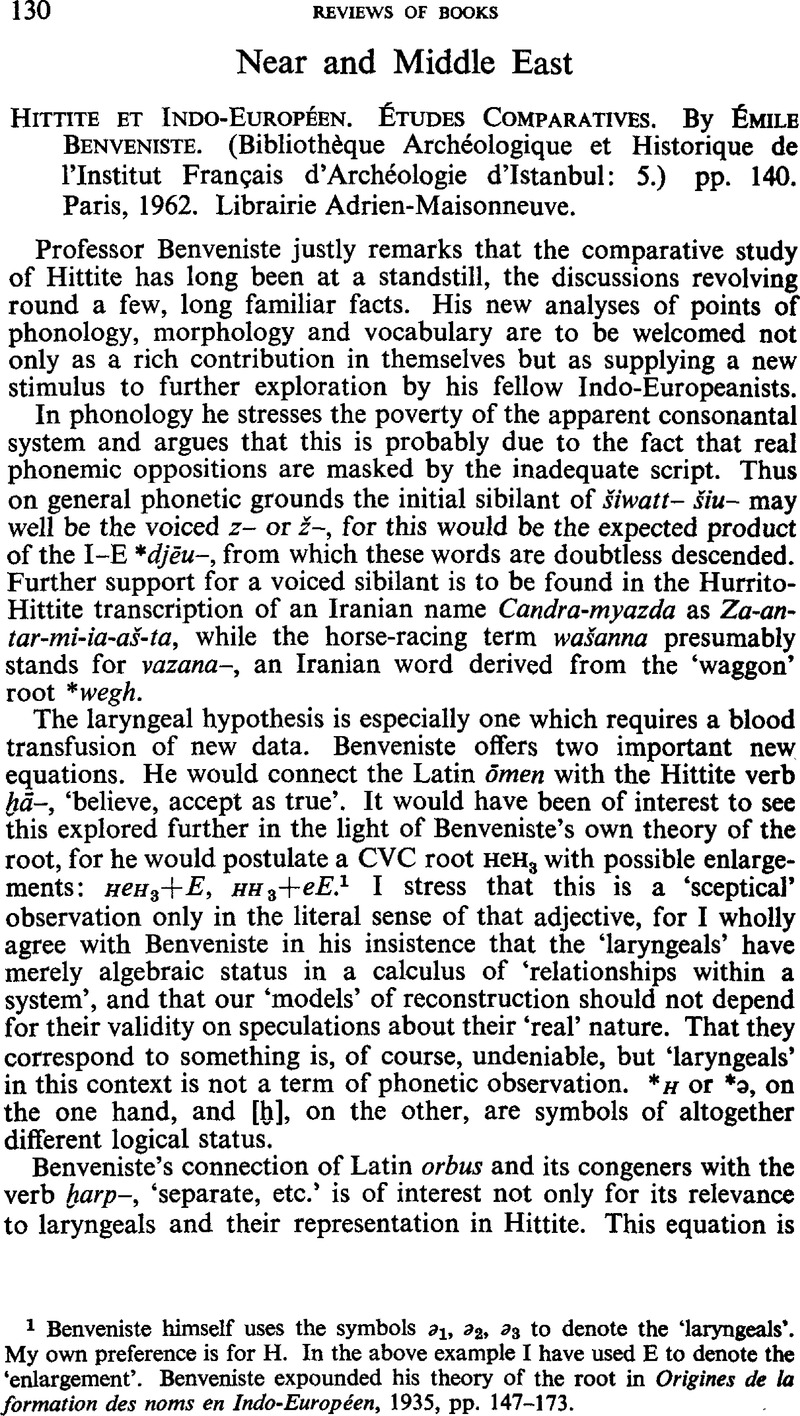No CrossRef data available.
Article contents
Hittite et Indo-Européen. Études Comparatives. By Émile Benveniste. (Bibliothèque Archéologique et Historique de l'Institut Français d'Archéologie d'Istanbul: 5.) pp. 140. Paris, 1962. Librairie Adrien-Maisonneuve.
Review products
Published online by Cambridge University Press: 15 March 2011
Abstract

- Type
- Reviews of Books
- Information
- Copyright
- Copyright © The Royal Asiatic Society 1964
References
page 130 note 1 Benveniste himself uses the symbols ә1, ә2, ә3 to denote the ‘laryngeals’. My own preference is for H. In the above example I have used E to denote the ‘enlargement’. Benveniste expounded his theory of the root in Origines de la formation des noms en Indo-Européen, 1935, pp. 147–173.
page 131 note 1 See A. Ernout and A. Meillet, Dictionnaire étymologique de la langue latine sub voc. orbus.
page 131 note 2 Palmer, L. R., Bull. Inst. Class. Studies II (1955), 36CrossRefGoogle Scholar; Ventris, M. and Chadwick, J., Documents in Mycenaean Greek, p. 365Google Scholar.
page 132 note 1 Laroche, E., Les hiéroglyphes hittites I, p. 230Google Scholar translates arha makisha as ‘j'ai brisé’ equating it with w-šbrt in the parallel Phoenician text. But there appears to be an extra sentence in the hieroglyph version and the sense of the Phoenician ‘I destroyed all the evil in the land’ is rendered by the following sentence: 60 if.


